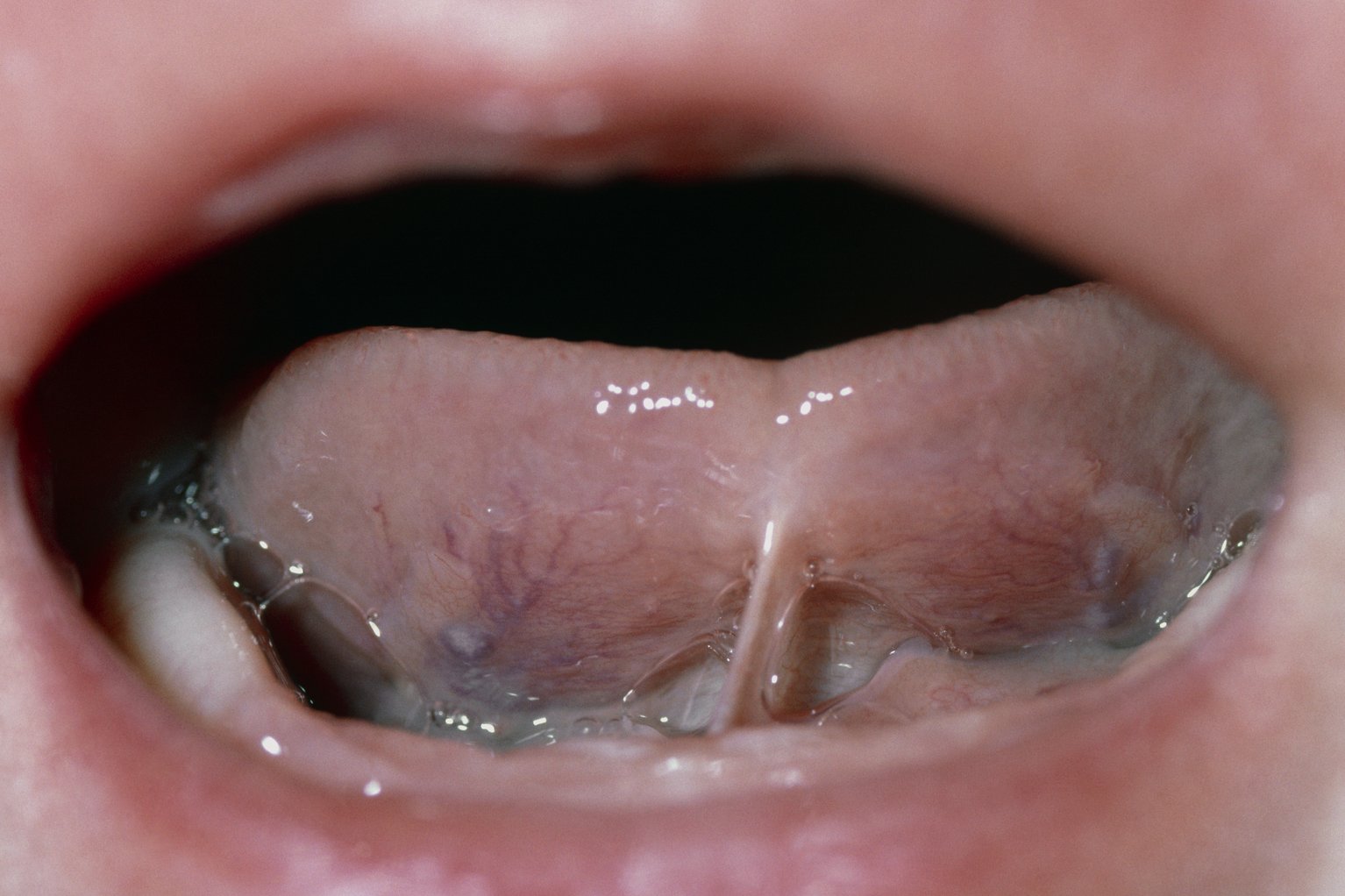
If you are having trouble breastfeeding or if your baby seems to have difficulty moving his/her tongue, it could be a sign of a tongue tie..
In this article we will tell you what a tongue-tie is and how you can help your baby if he/she is diagnosed with one.
What are the signs of a tongue-tie?
A tongue-tie is also called ankyloglossia. This occurs when the strip of skin that connects your baby’s tongue to the bottom of his/her mouth is shorter than usual.
If your baby is tongue-tied, your doctor may notice it during the physical examination performed post birth. This isn’t the case every time, as tongue-tie may not present itself until your baby breastfeeds.
Some other signs that may indicate a tongue-tie are:
- Your baby’s tongue looks heart-shaped when he/she sticks it out.
- Your baby has difficulty when trying to stick his/her tongue out.
- Your baby finds it hard to lift his/her tongue up or to move it from side to side.
What causes tongue-tie?
Tongue-tie is a common condition that affects almost 5% of newborns, and it may be caused by genetics (studies have confirmed ).
A tongue-tie is the result of lack of separation from your baby’s frenulum (the band of tissue under his/her tongue) and tongue before birth. It is usually an isolated condition.
Is tongue tie surgery necessary?
The need for surgery will depend on his/her specific case, as some babies aren’t bothered by tongue-tie. If your baby is having issues due to it, a procedure may be helpful. It’s also important to know that tongue-tie can cause problems with speech, eating, and oral hygiene.
Talk to your healthcare provider regarding this matter.
How do I calm my baby after tongue tie surgery?
If your baby’s tongue-tie isn’t treated, it might not cause problems. Tightness from tongue tie may even resolve naturally as his/her mouth develops. If your doctor recommends surgery, these are the two procedures that will be considered:
- Frenotomy: is a quick and simple surgical procedure that is done with sterile scissors. It is performed by cutting the short, tight piece of skin that connects the underside of the tongue to the bottom of your baby’s mouth. This can be done with or without anesthesia in the doctor’s office.
This procedure has almost no discomfort as there are only a few nerve endings in the area.
Your baby may fall asleep during the procedure or cry a little bit, but he/she will not be hurt. Your baby may develop an ulcer under his/her tongue afterwards, which heals after one or two days.
Frenotomy is a great procedure, as it takes only a few seconds and you can start feeding your baby right away.
- Frenuloplasty: a more extensive procedure done under general anesthesia with surgical tools. This is recommended when additional repair is needed. The wound from this procedure is closed with sutures that heal on their own afterwards.
When frenuloplasty is done, your doctor may recommend some tongue exercises to enhance tongue movement and reduce the chance of scarring.
*If tongue-tie is treated when your baby is older or even in adulthood, general anesthesia will be required.
How does it affect breastfeeding?
When babies present issues with breastfeeding, or can be the result of a tongue-tie. Once this condition is corrected, breastfeeding does not present problems.
If your baby is tongue-tied, some of the difficulties shown while breastfeeding, are:
- Difficulty attaching to your breast or staying attached.
- Being unsettled and seeming hungry all the time.
- Not gaining enough weight.
- Feeding for a long time and still acting hungry.
Tongue-tie can cause issues for the mother as well, such as: sore or cracked nipples, low milk supply, or presenting signs of mastitis.
*This doesn’t mean that you won’t be able to breastfeed your baby if he/she is tongue-tied.
It may mean that you will need professional help to make this journey easier.
Is tongue tie reversible?
In the majority of cases, the procedures for tongue-tie permanently correct the issue. Treating tongue tie can prevent troubles that may come with it, such as: eating, speech, or dental problems. In some cases where frenotomy is done, tongue-tie isn’t eliminated. In this case, frenuloplasty is needed.
*If tongue-tie isn’t treated, speech therapy can help your child to overcome his/her annunciation problems.
In Breastfeeding 101 we hope this information has been informative for you on the topic of tongue-tie and what you can do if your child has it.
Feel free to explore our content regarding baby’s health. If you want to learn more on the topic of tongue-tie, here is the research that made this article possible:
A Study on the Genetic Inheritance of Ankyloglossia Based on Pedigree Analysis I National Library of Medicine
Ankyloglossia (Tongue Tie) I Children’s Hospital of Philadelphia
Breastfeeding challenges I NHS
Tongue-tie I The Royal Women’s Hospital
Tongue-tie I NHS
Tongue-tie (ankyloglossia) I MayoClinic
Tongue-tie (ankyloglossia) division-in babies I NHS
Tongue-tie in Babies: a Guide for Parents: Sarah Oakley Lactation
Tongue-tie in neonates I Tidsskriftet
What is a tongue tie? Defining the anatomy of the in-situ lingual frenulum I Wiley Online Library
Avery Reckers




